Australia is known for having the deadliest creatures in the world. From sharks and snakes to box jellyfish and crocodiles there is plenty of wildlife that can kill you or do you serious harm.
Spiders are no exception and in the land, down under there are numerous species to concern yourself with.
From the Sydney funnel-web spider to the Redback spider, Australia’s deadliest spiders can be found in various regions throughout the country.
Despite their fearsome reputation, many of these spiders are not aggressive and are unlikely to bite humans unless provoked. However, it is important to be aware of their presence and to know what to look out for.
With that in mind, here are 10 of the most deadly spiders in Australia to be aware of.
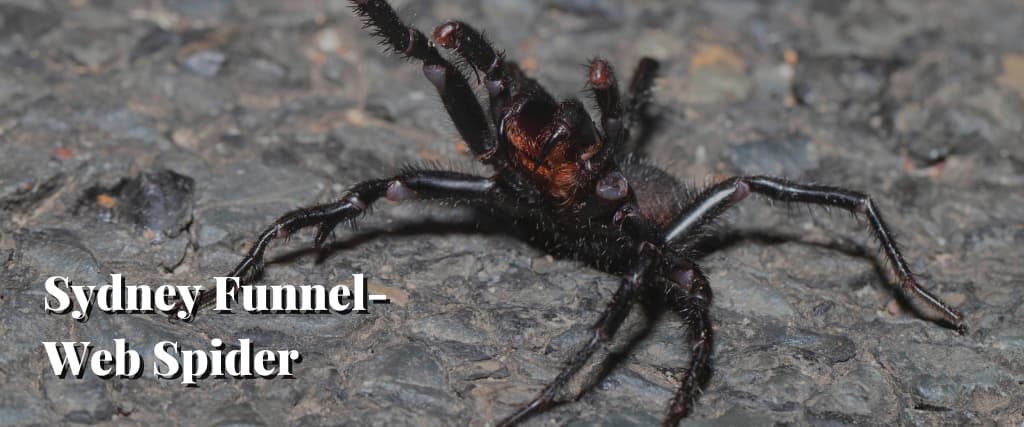
1. Sydney Funnel-Web Spider
The Sydney funnel-web spider (Atrax robustus) is a highly venomous spider that is native to Australia. It is considered one of the most dangerous spiders in the world due to its potent venom and aggressive behaviour.
A large, robust spider with a shiny, dark brown or black carapace, it is typically found in the southeastern region of Australia, particularly in and around Sydney, and can reside in both urban and rural environments.
Generally, it builds its burrow in moist, shaded areas such as under logs, in rock crevices, or in gardens. The spider’s burrow is distinctive, with a silk-lined tunnel leading to a flat web at the entrance. The spider uses this web to detect and capture prey.
The male Sydney funnel-web spider is particularly dangerous, as its venom contains a neurotoxin that can cause rapid and severe symptoms in humans. The venom attacks the nervous system, causing symptoms such as muscle twitching, sweating, and increased heart rate. In severe cases, the venom can cause respiratory failure, leading to death if left untreated.
Despite their fearsome reputation, the Sydney funnel-web spider is not particularly common, and fatalities from their bites are rare due to the availability of antivenom. In fact, no deaths from Sydney funnel-web spider bites have occurred since the development of antivenom in 1981.
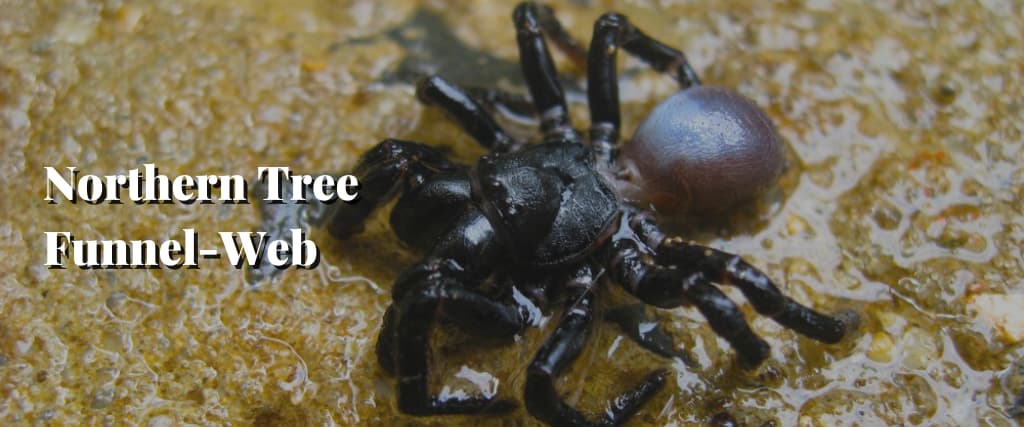
2. Northern Tree Funnel-Web
Officially known as Hadronyche formidabilis, the Northern Tree Funnel-Web spider is prevalent in the northern regions of New South Wales and southeastern Queensland. In fact, it is commonly known as the ‘Darling Downs funnel-web spider’ due to its heavy presence in that region.
Able to grow up to 4 cm in body length, this large, dark-coloured spider is a burrowing spider that builds its burrow in soil or leaf litter, often near the base of trees. The spider is most active during the
warmer months and can be found during the day as well as at night.
Like other funnel-web spiders, the Northern Tree Funnel-Web spider is known for its potent venom, which can cause serious symptoms in humans if bitten. However, the Northern Tree Funnel-Web spider is not considered as dangerous as the Sydney funnel-web spider, and no fatalities have been reported from its bite since 1981.
If you do get bitten, the symptoms of a Northern Tree Funnel-Web spider bite can include local pain and swelling, as well as systemic symptoms such as sweating, muscle twitching, and nausea. In severe cases, it can result in breathing difficulties and cardiac arrest.
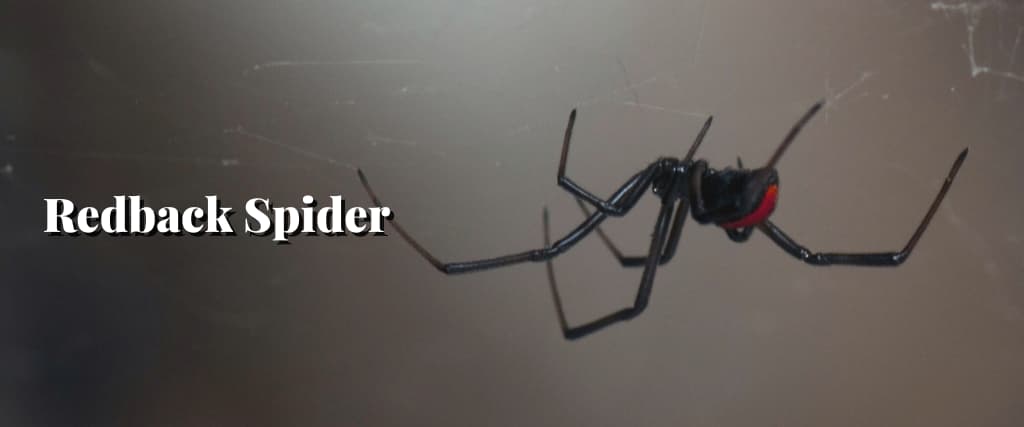
3. Redback Spider
One of the most famous of all Australia’s arachnids, the Redback spider (Latrodectus hasseltii) is closely related to the black widow spider found in the United States.
The female Redback spider is known for its distinctive red or orange stripe on its black, shiny body, while the male is smaller and usually brown in colour.
It is found throughout Australia and is particularly common in urban areas where it tends to reside in dry, sheltered locations such as under eaves, rocks, or in garden sheds.
The venom of the female Redback spider is highly toxic and can cause serious symptoms in humans if bitten. The venom attacks the nervous system, causing symptoms such as muscle pain, sweating, and nausea. In severe cases, the venom can lead to respiratory failure, which can be fatal if left untreated.
Despite the potency of the venom, fatalities from Redback spider bites are rare, and thankfully antivenom is readily available.
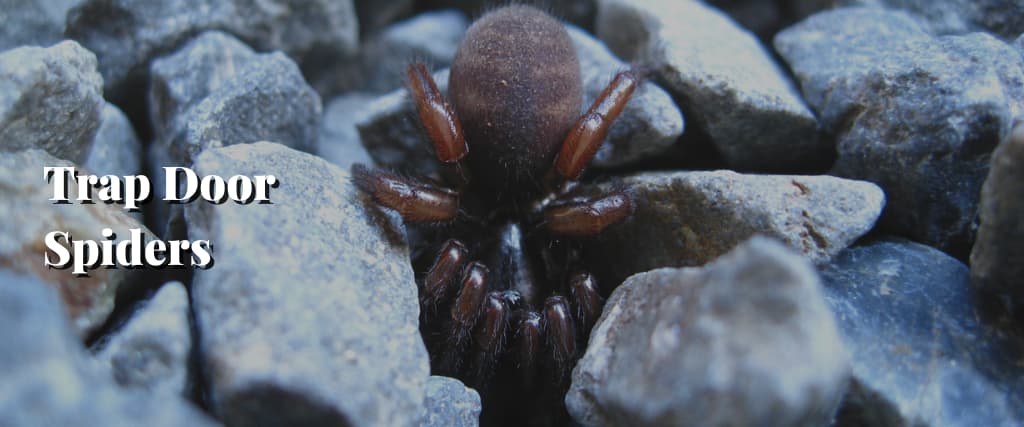
4. Trap Door Spiders
Trapdoor spiders (Ctenizidae) are a family of spiders known for their burrowing behaviour and the distinctive ‘trapdoor’ covers that they put over their burrows.
They are found throughout the world, with species identified in North and South America, Europe, Africa, and Australia.
Down under, they are commonly known as ‘funnel-web spiders’, although they are not related to the true funnel-web spiders that top this list. (They are a different family of spiders).
Generally, Trapdoor spiders are typically medium to large-sized and can grow to between 1 to 3 inches in length. They have stocky bodies and powerful jaws that they use to capture their prey, which includes insects, other spiders, and small vertebrates. Often brown or black in colour, they are known for having hairy bodies.
The most distinctive feature of trapdoor spiders is their burrowing behaviour. They build silk-lined burrows in soil, which can be up to 10 inches deep. The burrows are typically covered by a hinged trapdoor made of silk and soil particles, which the spider uses to hide and ambush its prey.
When an insect or other small animal walks over the trapdoor, the spider springs out and grabs its prey, dragging it back into the burrow to be eaten.
Trapdoor spiders are not considered to be dangerous to humans, although they can deliver a painful bite if provoked. They are generally not aggressive and will only bite if they feel threatened. The venom of most trapdoor spiders is not toxic to humans, and their bites are usually no worse than a bee sting.
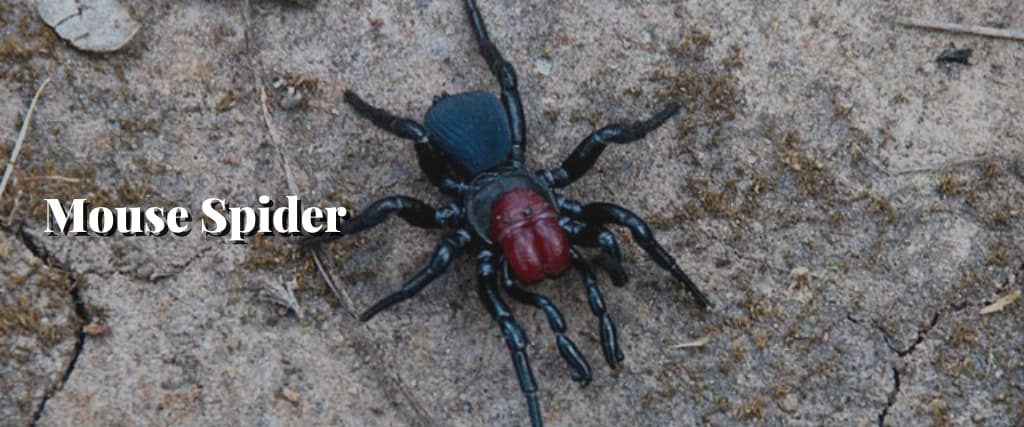
5. Mouse Spider
Next on the list is the Mouse Spider. Overall, there are three known species of Mouse Spider in Australia, with the most common being the Eastern Mouse Spider (Missulena bradleyi). The Mouse Spider is so named because of its physical resemblance to a small mouse, with its stout body and short legs.
The Mouse Spider is most often found across eastern and southern Australia in dry habitats such as grasslands, heathlands, and woodlands. In urban areas, they can also be commonly found in gardens and parks.
Male Mouse Spiders are black, while females can range from dark brown to black in colour. Their venom is similar in composition to the venom of the Funnel-Web Spider. However, Mouse Spider bites are relatively rare, as the spider is shy and non-aggressive.
When threatened, the Mouse Spider will rear up on its hind legs and expose its fangs, but it will typically try to escape rather than bite.
If bitten by a Mouse Spider, the symptoms can include pain, swelling, sweating, and nausea. In rare cases, the venom can cause more severe symptoms such as muscle pain, vomiting, and difficulty breathing. However, the use of antivenom is generally not required for Mouse Spider bites.
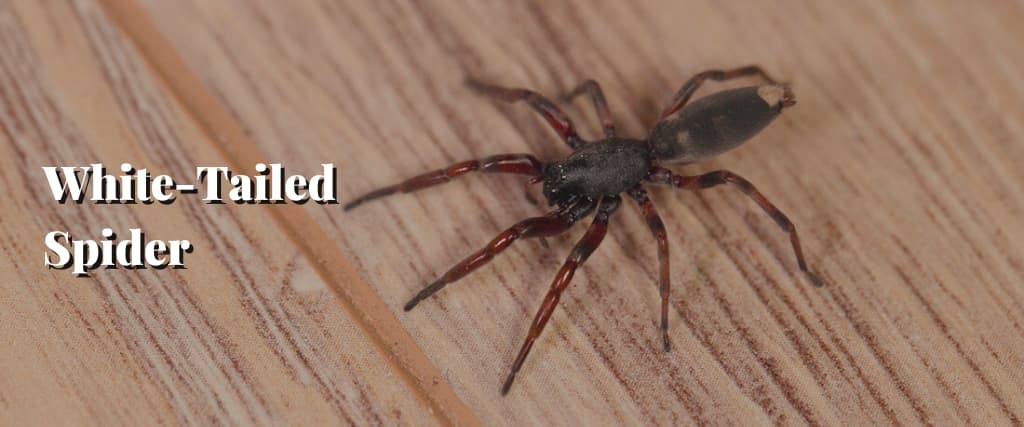
6. White-Tailed Spider
The White-Tailed Spider (Lampona cylindrata) is another species of venomous spider that resides in urban areas, particularly in homes and gardens.
Although it is a relatively small spider, with a body length of around 1 cm, it is often associated with biting humans.
Brown or grey in colour, with a distinctive white patch at the end of its abdomen, the spider takes its name from this white patch – which resembles a tail.
The White-Tailed Spider is known for its painful bite, which can cause symptoms like swelling, redness, and local pain. However, they are generally not considered to be life-threatening.

7. Australian Tarantulas
Australia is home to several species of tarantulas, which are large and hairy spiders that belong to the family Theraphosidae. The most well-known species of Australian tarantulas are the Whistling Spider (Selenocosmia crassipes), the Brown Trapdoor Spider (Misgolas spp.), and the Barking Spider (Selenotypus plumipes).
Australian tarantulas are generally not as aggressive as some other species of tarantulas around the world, and will usually try to escape when threatened rather than bite. However, they do possess venom that can be harmful to humans and can cause pain, swelling, and other symptoms.
The Whistling Spider is one of the largest species of tarantulas in Australia, with a body length of up to 8 cm. They are found in eastern and southern Australia, and are known for their distinctive hissing or whistling sound that they make by rubbing their legs together. While their venom is not considered to be life-threatening to humans, they can deliver a painful bite.
The Brown Trapdoor Spider is a medium-sized tarantula that is found in eastern and southern Australia. Named for the distinctive trapdoor-like burrows that they use as a shelter, the Brown Trapdoor Spider is also not considered to be aggressive but can cause swelling if they bite.
The Barking Spider is a small tarantula that is found in northern and eastern Australia. They are named for their distinctive barking sound, which is made by rubbing their legs together. Like the other two, their venom is not considered to be as toxic.
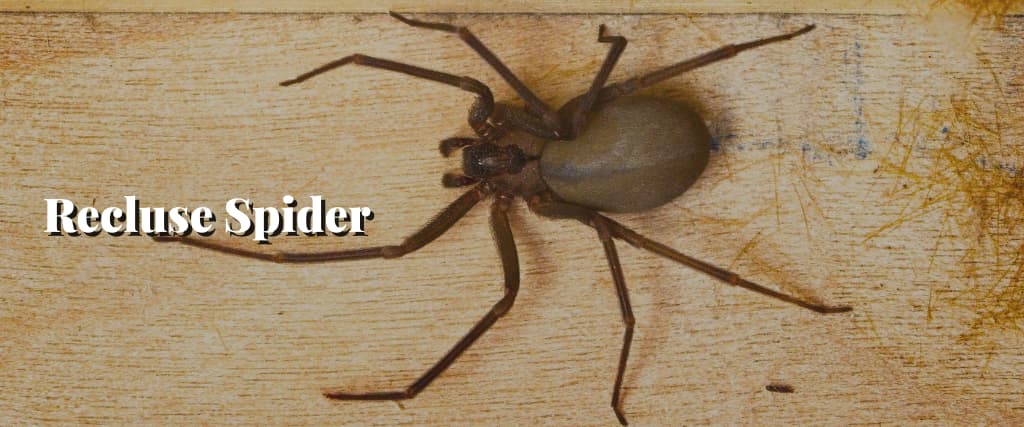
8. Recluse Spider
The Recluse Spider (Loxosceles reclusa) are one of those arachnids that you don’t want to get bitten by.
As its venom is haemotoxic, it could cause damage to your blood cells and can even disrupt blood clotting.
Most often found in Southern parts of Australia, it can grow up to 2 cm in length. They are not inclined to bite, and no one has reported being bitten by one in over 20 years.
However, if you are unlucky enough to suffer one, its venom can cause significant health issues.
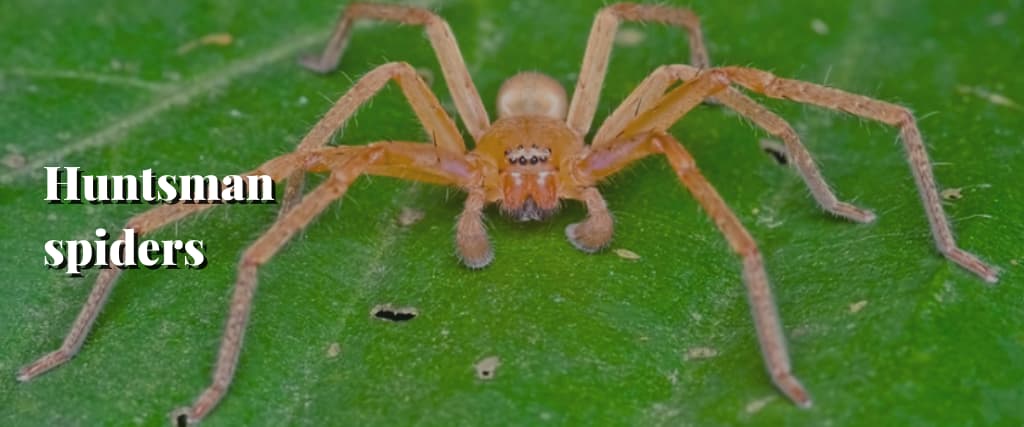
9. Huntsman spiders
Huntsman spiders are a family of spiders (Sparassidae) that are known for their large size and speed. They are found in many parts of the world, including Australia, where they commonly reside in homes and gardens.
Huntsman spiders are typically brown or grey in colour, with flattened bodies and long legs. They are generally not aggressive towards humans, but can move very quickly and can be quite intimidating due to their large size.
While their large size and appearance can be frightening, huntsman spiders are actually beneficial to have around, as they feed on a variety of insects and other arthropods, helping to keep their populations in check.
While not venomous to humans, their bites can be painful, causing swelling and redness. In most cases, the symptoms are mild and resolve on their own within a few hours or days. However, in rare cases, a severe allergic reaction can occur.
If you find a huntsman spider in your home or garden and would like to remove it, the best approach is to use a glass or jar to capture the spider and then release it outside.
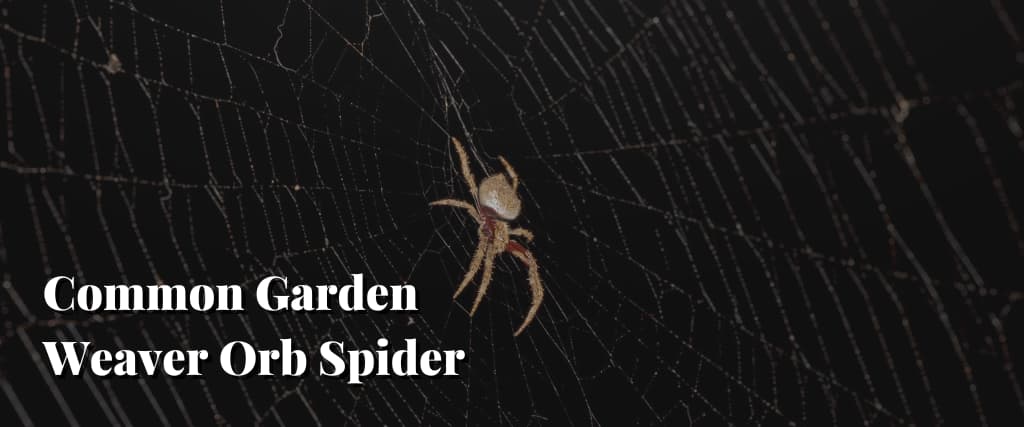
10. Common Garden Weaver Orb Spider
The Common Garden Weaver Orb Spider (Eriophora transmarina) is a spider species that is native to Australia. They are commonly found in gardens and other vegetation, where they build large, orb-shaped webs that are used to trap their prey.
It is a relatively large spider, with females growing up to a maximum of around 3 – 4 centimetres in length. They are typically brown or grey in colour, with distinctive white or yellow markings on their abdomen.
One interesting feature of orb weaver spiders is their ability to recycle their webs. After catching their prey, they will often consume the silk of the web and rebuild it, which helps to maintain the integrity of the web and maximize its effectiveness in catching prey.
To humans, Orb weaver spiders are generally not aggressive, and their venom is not considered to be dangerous. However, their bites can really hurt, although they are not known to cause serious health problems in humans.
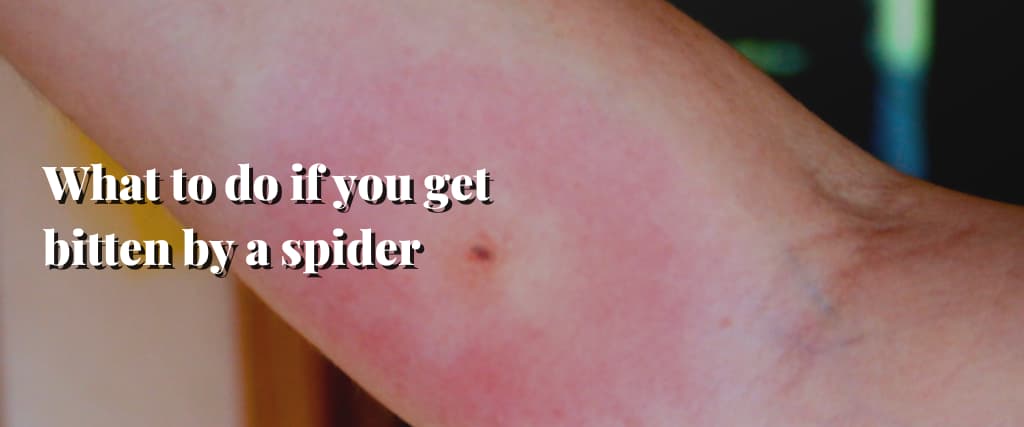
What to do if you get bitten by a spider
So there you have it, our review of the 10 most deadliest species of spiders in Australia.
While it is generally a rare occurrence, to reduce your chances of getting bitten, it is recommended to wear protective clothing when working or camping in areas where the spider is known to inhabit.
If you see any of these spiders, it is important to exercise caution and not approach them. Should you get bitten, you are advised to seek medical attention immediately, as antivenom is available at hospitals and medical clinics in areas where the spider is found.
